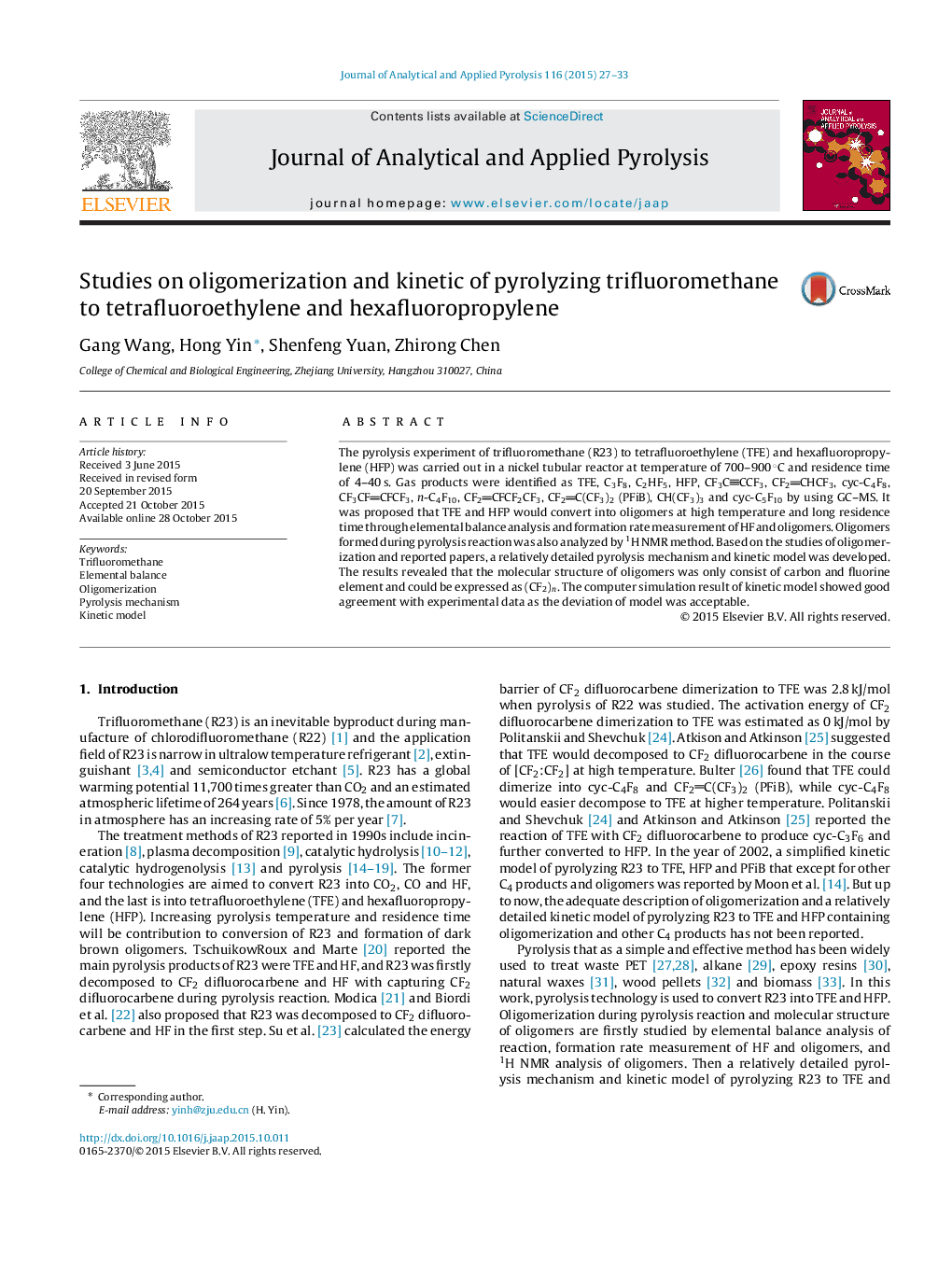| Article ID | Journal | Published Year | Pages | File Type |
|---|---|---|---|---|
| 1196998 | Journal of Analytical and Applied Pyrolysis | 2015 | 7 Pages |
•The oligomerization during pyrolysis is studied.•The elemental balance of pyrolysis reaction is analyzed.•The molecular structure of oligomers is confirmed.•The relatively detailed pyrolysis mechanism and kinetic is studied.
The pyrolysis experiment of trifluoromethane (R23) to tetrafluoroethylene (TFE) and hexafluoropropylene (HFP) was carried out in a nickel tubular reactor at temperature of 700–900 °C and residence time of 4–40 s. Gas products were identified as TFE, C3F8, C2HF5, HFP, CF3CCCF3, CF2CHCF3, cyc-C4F8, CF3CFCFCF3, n-C4F10, CF2CFCF2CF3, CF2C(CF3)2 (PFiB), CH(CF3)3 and cyc-C5F10 by using GC–MS. It was proposed that TFE and HFP would convert into oligomers at high temperature and long residence time through elemental balance analysis and formation rate measurement of HF and oligomers. Oligomers formed during pyrolysis reaction was also analyzed by 1H NMR method. Based on the studies of oligomerization and reported papers, a relatively detailed pyrolysis mechanism and kinetic model was developed. The results revealed that the molecular structure of oligomers was only consist of carbon and fluorine element and could be expressed as (CF2)n. The computer simulation result of kinetic model showed good agreement with experimental data as the deviation of model was acceptable.
